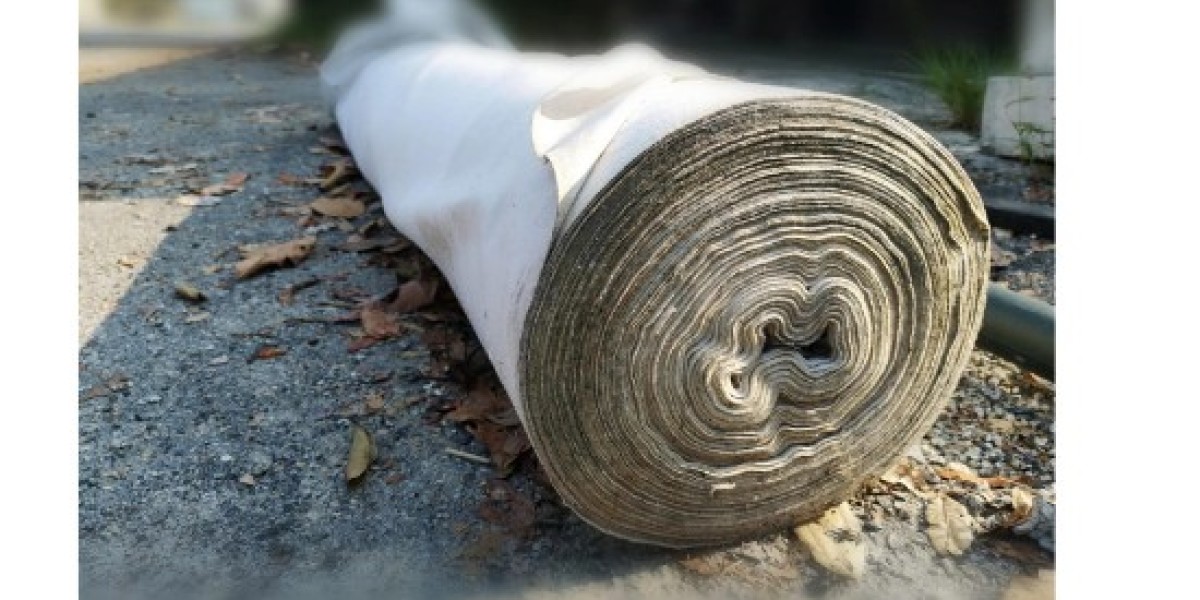Geotextiles have become essential in various construction, landscaping, and environmental protection projects, offering versatile solutions for soil stabilization, erosion control, drainage, and more. Among these products, Geotextile Sheet Specification stand out due to their unique characteristics, making them critical components in infrastructure development. Understanding the specifications of geotextile sheets is crucial for selecting the right product for your project’s requirements.
In this post, we’ll take a deep dive into geotextile sheet specifications, exploring their types, uses, properties, and how they contribute to successful project outcomes. We will also address frequently asked questions (FAQs) about geotextile sheet specifications to provide a clearer understanding of their role in modern civil engineering and environmental management.
What is a Geotextile Sheet?
A geotextile sheet is a permeable fabric made from synthetic fibers like polypropylene or polyester. These sheets are used in various geotechnical applications to separate, filter, reinforce, protect, or drain soil. Geotextile sheets can be woven, non-woven, or knitted, each offering different properties depending on the application.
The right geotextile sheet specification is determined by factors such as the material's tensile strength, permeability, thickness, and resistance to environmental conditions. These specifications dictate how well the sheet performs in applications such as road construction, drainage systems, or erosion control.
Types of Geotextile Sheets
There are two main types of geotextile sheets—woven and non-woven. Each type serves different purposes and has specific strengths, making them ideal for distinct applications.
1. Woven Geotextile Sheets
Woven geotextiles are made by weaving synthetic fibers together in a grid-like pattern. These sheets offer high tensile strength, making them ideal for applications where soil reinforcement is required. Woven geotextiles are typically used in road construction, embankments, retaining walls, and slope stabilization projects.
Key characteristics of woven geotextile sheets:
- High tensile strength and load-bearing capacity
- Low elongation (less stretch)
- Excellent durability under heavy loads
- Ideal for soil stabilization and reinforcement
2. Non-Woven Geotextile Sheets
Non-woven geotextiles are produced by bonding fibers together, either mechanically or chemically, rather than weaving them. These sheets are commonly used for filtration, drainage, and separation purposes. Non-woven geotextiles are often used in road and railway construction, erosion control, drainage systems, and landscaping.
Key characteristics of non-woven geotextile sheets:
- High permeability and drainage capacity
- More flexibility and stretch compared to woven sheets
- Ideal for filtration, drainage, and soil separation
- Useful in protecting underlying layers from soil contamination
Geotextile Sheet Specifications
When selecting a geotextile sheet, it is essential to understand the various specifications that determine its performance in different applications. Below are the key geotextile sheet specifications you should consider:
1. Tensile Strength
Tensile strength refers to the maximum load a geotextile sheet can withstand before breaking. Woven geotextiles typically offer higher tensile strength, making them suitable for applications that involve heavy loads, such as road construction and soil reinforcement.
2. Permeability
Permeability is the ability of a geotextile sheet to allow water or air to pass through. Non-woven geotextiles are known for their high permeability, which makes them ideal for drainage systems and filtration projects. A higher permeability ensures that water can flow freely while preventing soil particles from moving.
3. Apparent Opening Size (AOS)
The apparent opening size (AOS) of a geotextile sheet indicates the size of the pores within the fabric. This specification is crucial for applications that require filtration, as it determines the size of soil particles that the sheet can retain. For example, finer pores are needed to prevent fine sand or silt from passing through.
4. Weight
The weight of a geotextile sheet, typically measured in grams per square meter (g/m²), is an important factor in determining its durability and application. Heavier geotextiles are generally stronger and more resistant to puncture, making them suitable for reinforcement and protection applications.
5. UV Resistance
Geotextile sheets are often exposed to sunlight, which can degrade the fabric over time. UV resistance refers to the ability of a geotextile sheet to withstand prolonged exposure to ultraviolet radiation without losing its strength or structural integrity. UV-resistant geotextiles are necessary for projects where the material will be exposed to sunlight for extended periods.
6. Elongation
Elongation refers to how much a Geo Sheet Price can stretch before breaking. Non-woven geotextiles tend to have higher elongation, making them more flexible and adaptable to uneven terrain. This specification is particularly important in applications such as slope stabilization, where the fabric needs to conform to varying surface contours.
7. Chemical Resistance
Geotextile sheets are often exposed to chemicals, such as in landfills, industrial waste sites, or contaminated soil. The ability to resist degradation from chemicals is crucial for ensuring the longevity of the sheet in harsh environments. Geotextiles made from polypropylene and polyester are generally resistant to a wide range of chemicals.
Key Applications of Geotextile Sheets
Geotextile sheets are widely used in a variety of civil engineering, construction, and landscaping projects. Some of their key applications include:
1. Road Construction
Geotextile sheets are commonly used in road construction to reinforce the subgrade, improve load distribution, and prevent soil from mixing with the aggregate base. Woven geotextiles are often preferred for road construction due to their high tensile strength.
2. Erosion Control
Non-woven geotextile sheets are frequently used for erosion control along riverbanks, shorelines, and slopes. These sheets protect soil from being washed away by water while allowing water to pass through.
3. Drainage Systems
Geotextile sheets are used in drainage systems to prevent soil from clogging pipes or other drainage materials. Their high permeability ensures that water can flow freely, while their filtration properties keep fine particles out.
4. Landfill Liners and Caps
Geotextiles are often used in landfills to separate waste from the surrounding environment. They are placed as liners to prevent leachate from contaminating the soil and groundwater, and as caps to reduce gas emissions and water infiltration.
5. Reinforcing Retaining Walls
Woven geotextiles are used in retaining wall construction to reinforce the soil behind the wall, providing additional strength and stability.
Benefits of Geotextile Sheets
Geotextile sheets provide several advantages in construction and environmental management projects:
- Cost-Effective: Geotextile sheets reduce the need for extensive earthworks, minimizing costs associated with excavation, transport, and labor.
- Environmentally Friendly: They allow the use of local materials, reduce erosion, and improve water filtration, making them an eco-friendly option for infrastructure projects.
- Durability: Geotextiles are designed to withstand harsh environmental conditions, including exposure to UV rays, chemicals, and physical wear.
- Versatility: Their flexibility and adaptability make them suitable for a wide range of applications, from road construction to landfill management.
Best Practices for Selecting Geotextile Sheets
Choosing the right geotextile sheet involves understanding the specific requirements of your project and matching those needs with the appropriate geotextile specifications. Consider the following when selecting a geotextile sheet:
Understand the Project Requirements: Determine whether your project requires reinforcement, filtration, drainage, or separation. This will help you decide between woven and non-woven geotextiles.
Consider Environmental Factors: For projects exposed to sunlight or chemicals, ensure that the geotextile sheet is UV and chemically resistant.
Use Appropriate Specifications: Match the tensile strength, permeability, and other specifications to your project’s load requirements and environmental conditions.
Ensure Proper Installation: Correct installation is essential to the performance of geotextile sheets. Ensure that the sheets are laid properly and anchored to prevent shifting.
Conclusion
Geotextile sheets play a critical role in various construction and environmental projects, offering solutions for soil stabilization, filtration, drainage, and erosion control. By understanding the key specifications—such as tensile strength, permeability, and UV resistance—you can select the right geotextile for your project's needs. Whether for road construction or erosion management, Geotextile Road Construction provide durability, cost-effectiveness, and environmental benefits, making them an essential tool in modern civil engineering.
FAQs
1. What is the difference between woven and non-woven geotextile sheets?
Woven geotextiles are made by weaving synthetic fibers together, providing high tensile strength and durability, making them ideal for soil reinforcement. Non-woven geotextiles, on the other hand, are bonded mechanically or chemically and offer higher permeability, making them suitable for filtration and drainage.
2. How do I choose the right geotextile sheet for my project?
The right geotextile sheet depends on your project’s specific needs. For load-bearing applications like road construction, woven geotextiles are best. For drainage or erosion control, non-woven geotextiles are more appropriate.
3. Can geotextile sheets be used in extreme weather conditions?
Yes, geotextile sheets are designed to be highly durable and can withstand a range of environmental conditions, including extreme temperatures and exposure to UV rays. However, you should choose geotextiles with the necessary UV and chemical resistance for long-term projects exposed to harsh conditions.
4. How long do geotextile sheets last?
The lifespan of a geotextile sheet depends on factors like material quality, environmental exposure, and the specific application. In general, geotextiles



